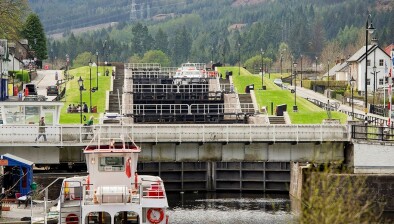Blog: Community Land Week: community land ownership becoming the norm

As community groups across Scotland are opening up their doors showcasing what happens on community owned land in the first Community Land Week, Scottish Land Commissioner, Megan MacInnes looks at the importance of community land ownership and its success story in Scotland’s land reform journey to date.
Land across much of the world is traditionally owned and managed by communities but the community right to buy land that we have in Scotland is unique. According to the 2015 SPICe Briefing ‘International Perspectives on Land Reform’ the “shift in policy towards community ownership in Scotland since the Land Reform (Scotland) Act 2003 is in contrast to the apparent European trend towards increasing land consolidation” and the Scottish Community Right to Buy exists no-where else.
From pioneering beginnings in places like Assynt, Knoydart and Eigg, community ownership has become an established model; relevant to rural and urban communities alike. As it has grown, so has the level of ambition and recognition of its potential. Efforts to find ways to ensure communities legally own the land they live on in Scotland are being reflected by efforts globally, in particular increasing the tenure security of the land belonging to indigenous peoples and local communities.
Land ownership brings within community control an ability to realise opportunities and create social and economic benefits, an ability to develop income streams and confidence to shape local assets, services and places. Community land ownership is an effective means to deliver community-led development and regeneration, underpinning resilient local economies, delivering outcomes that go well beyond a change in ownership. But more than this, communities owning lands transforms the relationship between local people and the land on which they live and how decisions about the land are made.
In addition to the benefits for the community itself, other types of land owners could learn from the ways in which community land ownership models integrate transparency, community engagement and local accountability into the heart of decision-making around land, its use and management.
Of course, community land ownership is not ‘the answer’ for all communities, or indeed to all calls for land reform. It is not the only way to realise opportunities for development, nor should its challenges be underestimated. But we do think that it should be a much more common part of the mix of land ownership in all parts of Scotland both urban and rural.
The public interest outcomes of community land ownership across rural and urban communities are the same but the increasing interest in community ownership in urban centres demands a fresh look.
In urban centres it may be ownership of a single building that will make the difference, but the same may be true for a rural community. While for some communities ownership of a large ‘estate’ land holding may be appropriate, for many more it is ownership of sufficient land to meet local housing needs, community facilities, recreation space or assets to generate long-term revenue that will make the difference.
Community ownership needs to be recognised and integrated into established and emerging approaches to economic development and regeneration. Community ownership connects place-making, social and economic resilience and regeneration.
To continue with the success of community ownership it is important that the number and range of communities benefitting from having land and assets under community control is monitored and what this enables them to achieve is appraised. The success of community land ownership is being evidenced by the active and resilient communities in which ownership of land and buildings is seen as an integral part of shaping their long-term provision of facilities, services, revenue and opportunities.
With the introduction of the urban community right to buy, there is a move for community land ownership to become ‘normal’ and seen as an option for communities across the country. To continue the success story of community land ownership it is important to support that shift and for it to be normal process for communities to consider what land or buildings around them should be owned by the community and taking a proactive, planned approach to acquiring them. Negotiations between a willing seller/willing buyer need to be encouraged with existing and forthcoming rights to buy effective in enabling communities to purchase land.
The Scottish Land Commission is currently carrying out a detailed study on opportunities to improve existing rights to buy, and what wider steps are needed to make community ownership a more viable across Scotland. We will be publishing our findings and recommendations to Scottish Government in the next couple of months.
Community Land Week is an excellent opportunity to learn from those communities who have gone through the process, the lessons they have learned and how they have made it a success. Have a look at Community Land Scotland’s website to find out more.
This article was originally published on the Scottish Land Commission website

















